Center for Global Environmental Research,
National Institute for Environmental Studies
16-2 Onogawa, Tsukuba, Ibaraki 305-8506, Japan
Facilities
Headquarters
Climate Change Research Hall
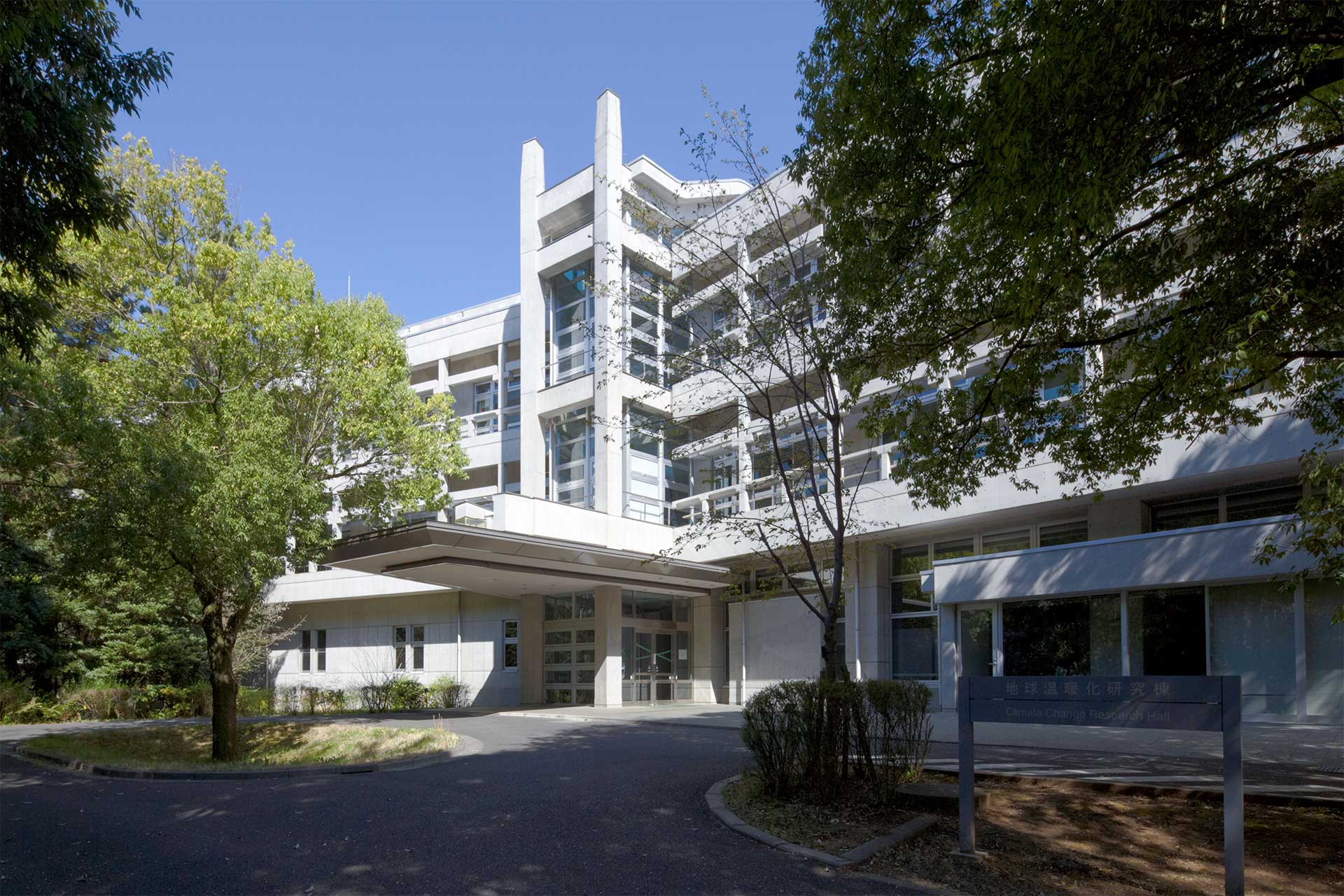
Most of the researchers studying global warming and the staff supporting their research are working in the Climate Change Research Hall. In addition to the working spaces of researchers and administrative staff, there is a gallery with posters introducing the latest research results, a conference room, and laboratories where air samples from all over the world are carefully analyzed. The researchers also make atmospheric observations using instruments such as the FTS, which measures greenhouse gas concentrations in the atmosphere utilizing solar reflectance. A general-purpose supercomputer, as well as a GOSAT computer system to analyze GOSAT data, are installed and operated in the adjacent annex building.
External Facilities
Hateruma Global Environmental Monitoring Station
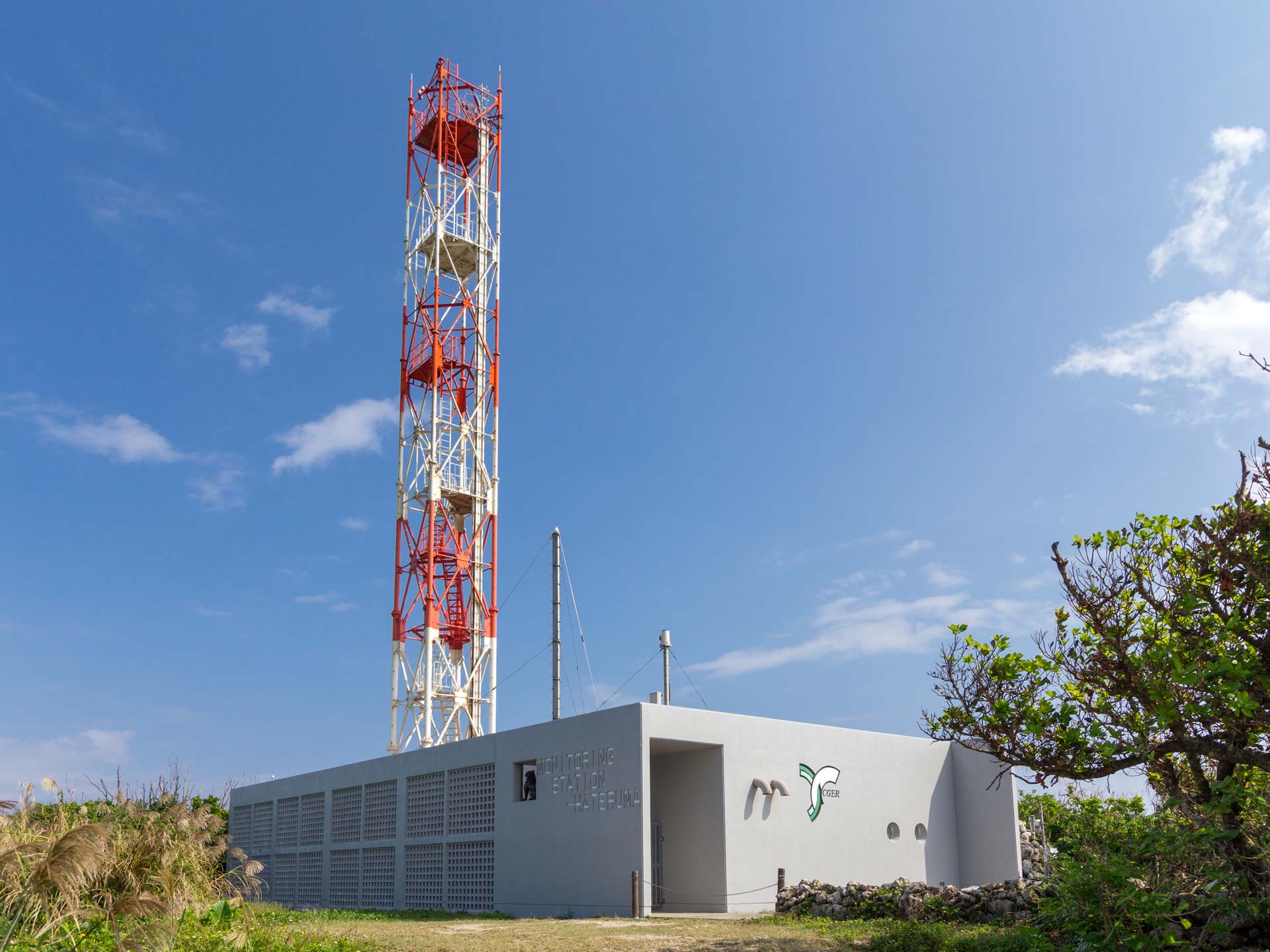
Hateruma Island is the southernmost inhabited island of Japan situated in the center of the Yaeyama Archipelago approx. 70 km north from the Tropic of Cancer and 51 km southwest of Ishigaki Island. The island has an area of approx. 12.8 km2 and a population of about 520 people (as of March 2015). The island’s main industry is sugar cane farming and brown sugar production. The monitoring station is located at the eastern tip of the island, about 100 m inland from the coral reef coast. Because most residential areas, power plants, and sugar factories, operating only during the winter, are concentrated on the west side of the island, combined with the fact that the sample air is collected at the height of about 36.5 m of the observation tower, almost no influence from the land can be observed at any time throughout the year.
Cape Ochi-ishi Global Environmental Monitoring Station
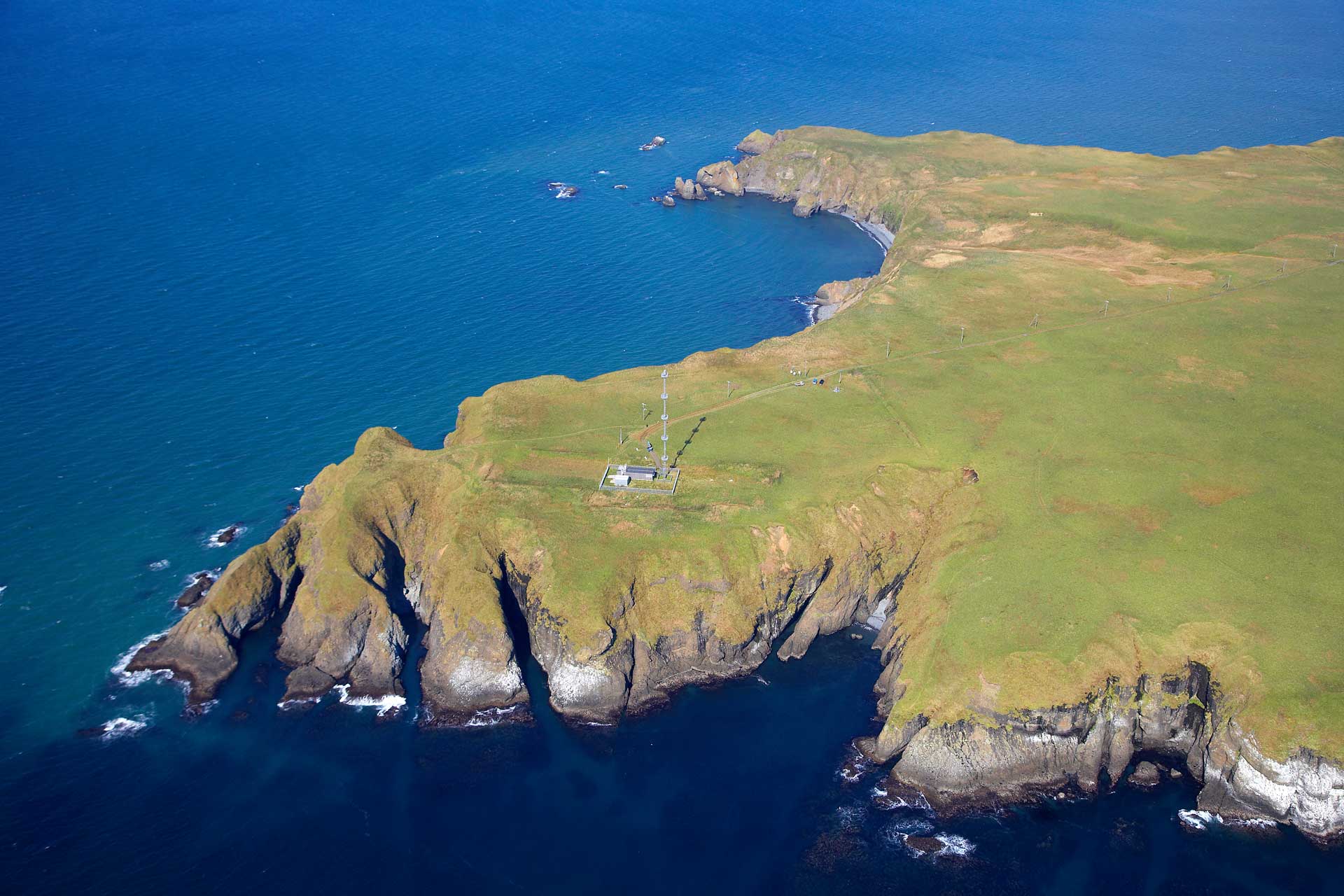
Cape Ochi-ishi is a small cape situated at the base of the Nemuro peninsula in eastern Hokkaido and is surrounded by cliffs. The center of the cape inland is covered by the Ochi-ishi Marchland and is also the southernmost border for the distribution of Sakai Azalea, a natural monument. The area is, therefore, designated as a Nature Preserve. The monitoring station is located on a cliff 50 meters above sea level. Although there is a residential district and the Ochi-ishi fishing harbor at the base of the cape, their influence is almost non-existent because they are situated approx. 2 km from the monitoring tower and the sample air is collected at the top of a 51 m high tower.
Rikubetsu Integrated Stratospheric Observatory
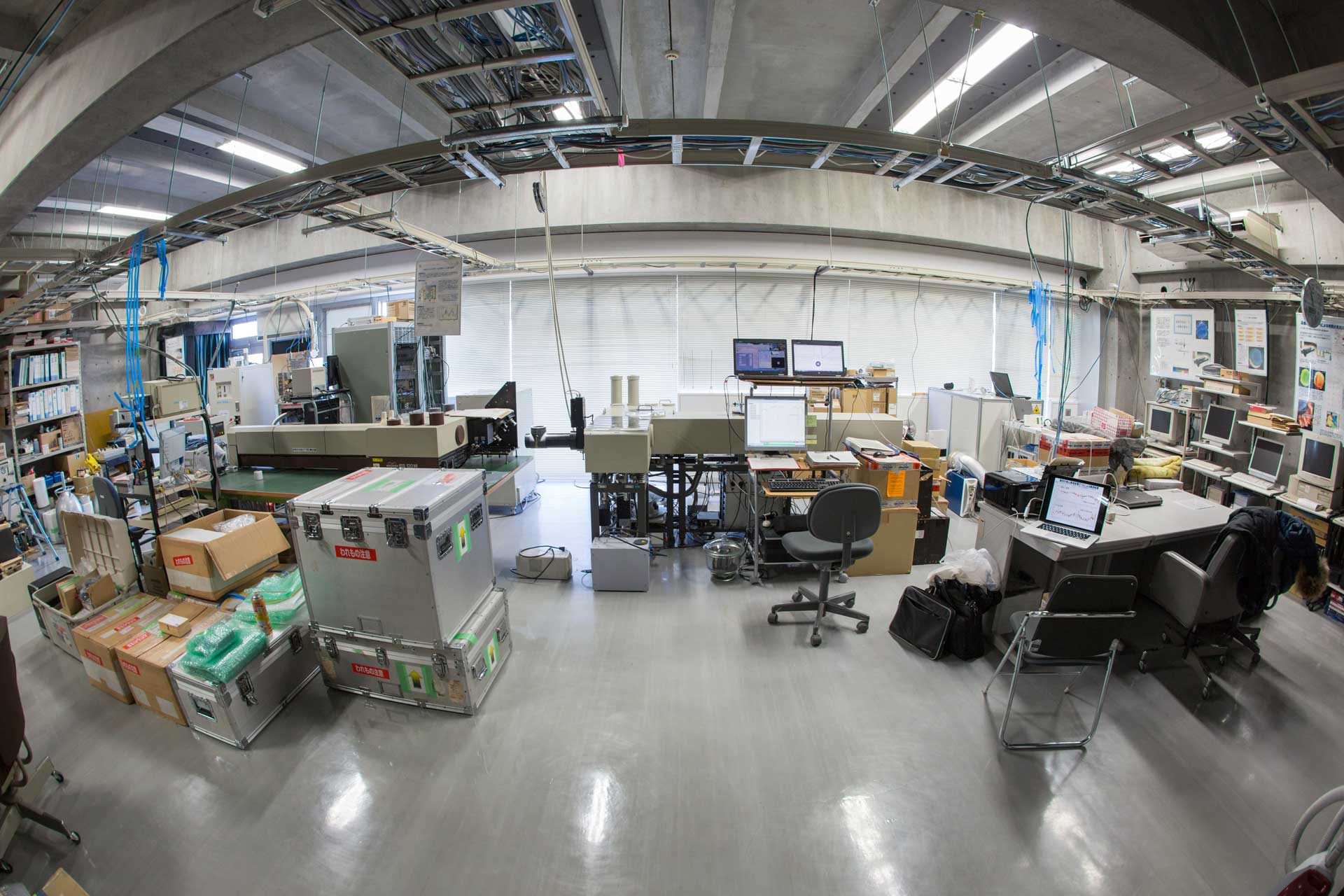
NIES has, in cooperation with the Institute for Space-Earth Environmental Research, Nagoya University, established an observation laboratory inside the Rikubetsu Space and Earth Science Museum in Rikubetsu, Hokkaido, to conduct atmospheric observations making use of the high proportion of clear-sky days and the lack of influence from local air pollution in the area. Since 2013, the Rikubetsu Integrated Stratospheric Observatory has been observing greenhouse gas column concentrations and other substances related to stratospheric ozone chemistry using a high-resolution Fourier transform spectrometer.
Fuji Hokuroku Flux Observation Site
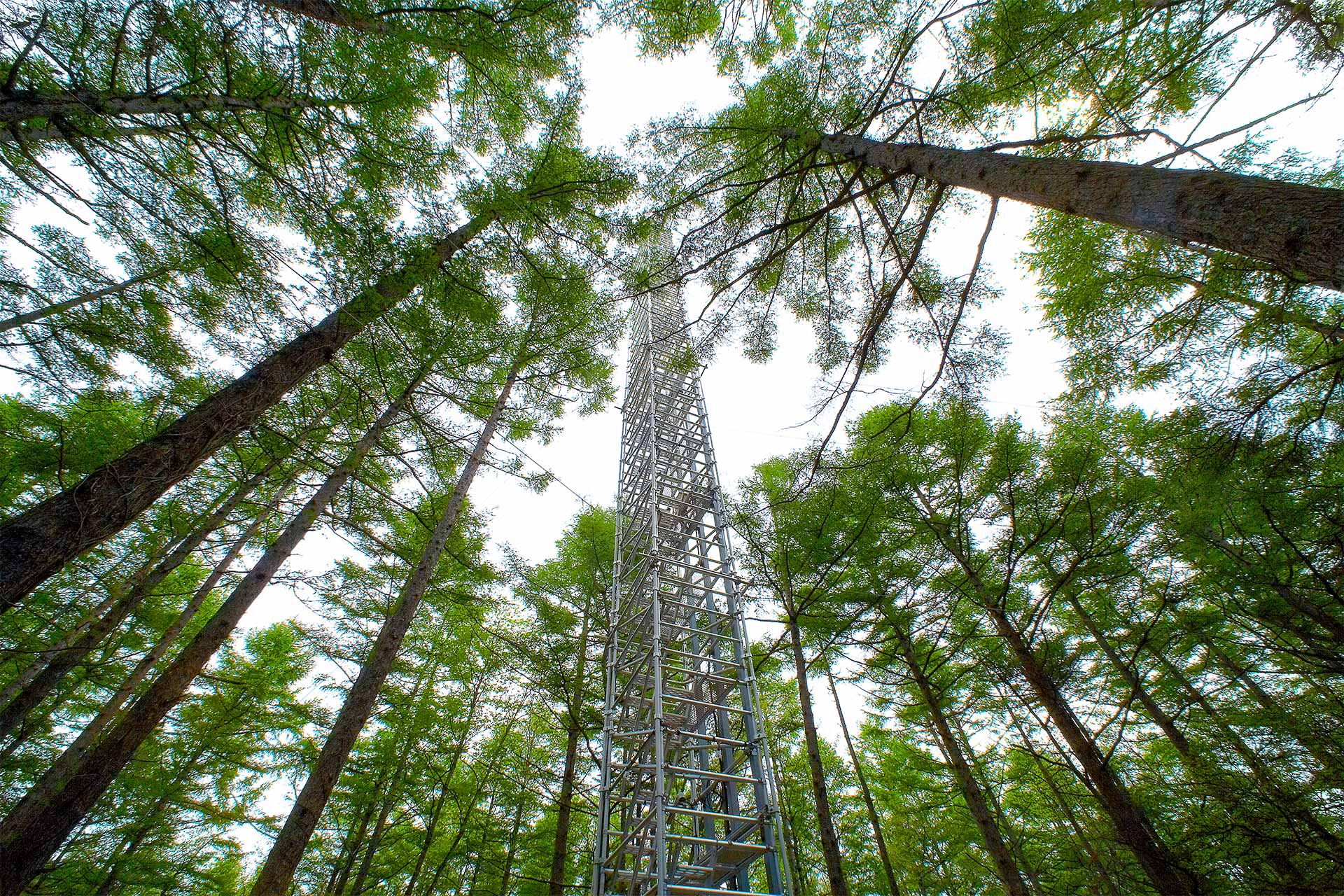
The Fuji Hokuroku Flux Observation Site is a larch plantation on a gentle slope at about 1100 m above sea level on the Yamanashi side of Mt. Fuji. The forest was planted around 1950 and has a tree height of about 20–25 m. Since the larch forest spreads out over a large area and there are no anthropogenic CO2 emission sources in the vicinity, the conditions for CO2 flux observations are ideal. Using a 31 m high observation tower installed in the center of the observation forest for various measurements, we are advancing the observation of forest ecosystem functions by different methods.
Teshio CC-LaG Site
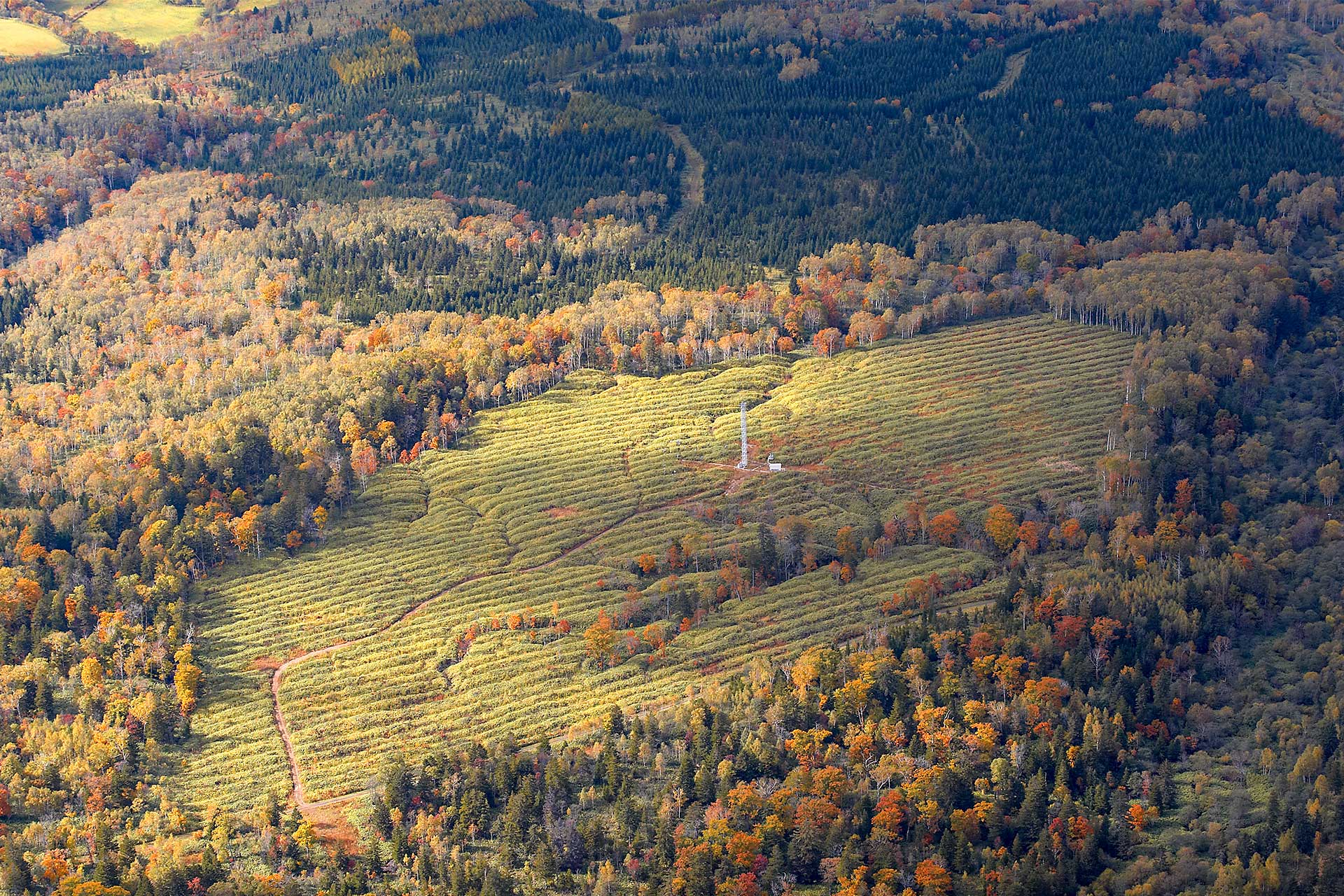
The Teshio CC-LaG site, located in the Teshio Experimental Forest of Hokkaido University, is a collaborative intergovernmental research project established in 2001 by the Center for Global Environmental Research (CGER), Field Science Center for Northern Biosphere of Hokkaido University, and Hokkaido Electric Power Co., Inc. In 2003, we clear-cut the natural mixed forest and planted larch to monitor changes in the carbon and related material cycles associated with larch growth. Since 2015, the project has been continued by CGER/NIES and the Field Science Center for Northern Biosphere, Hokkaido University.

